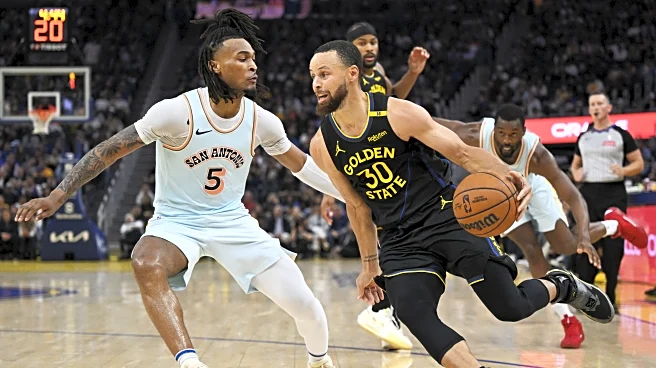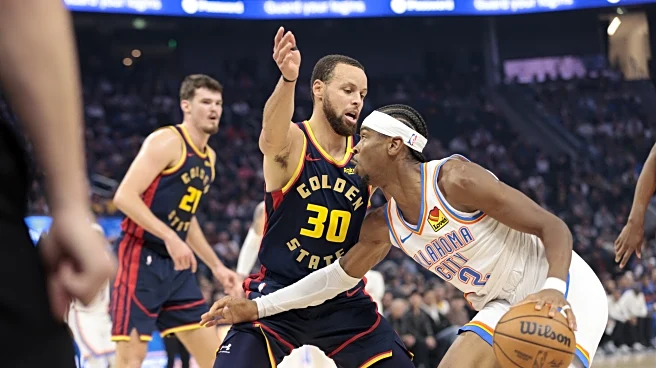What's Happening?
Draymond Green has expressed frustration with the Golden State Warriors following their fifth loss in seven games, a 126-102 defeat against the Oklahoma City Thunder. Green pointed to 'personal agendas'
among teammates as a key factor in the team's struggles, contrasting the current situation with last season's success after acquiring Jimmy Butler. He emphasized the need for personal agendas to align with team goals, warning that failure to do so could lead to negative consequences for individuals. The Warriors have faced challenges this season, including Stephen Curry's illness-related absences and Al Horford's injuries. The team, which has the second-oldest roster in the NBA, has seen a decline in offensive performance, dropping from ninth to 21st in league ratings.
Why It's Important?
The Warriors' recent struggles highlight potential issues within the team dynamics that could impact their performance in the NBA season. Green's comments suggest a need for greater cohesion and commitment to collective goals, which is crucial for maintaining competitiveness. The team's aging roster and injury challenges further complicate their ability to perform at a high level. If these issues persist, the Warriors may face difficulties in securing a strong position in the league, affecting their chances for playoff success. The situation underscores the importance of team unity and strategic management in professional sports.
What's Next?
The Warriors will need to address the internal dynamics and health issues affecting their performance. Ensuring Stephen Curry's full recovery and managing Al Horford's injuries will be critical for improving their offensive output. The team may also need to reassess strategies to better integrate personal agendas with team objectives. As the season progresses, the Warriors' management and coaching staff will likely focus on fostering a more cohesive team environment to enhance performance and competitiveness.
Beyond the Headlines
The Warriors' situation raises broader questions about the balance between individual ambitions and team success in professional sports. It highlights the challenges of managing veteran players and maintaining performance levels as athletes age. The team's experience may serve as a case study for other franchises facing similar dynamics, emphasizing the importance of leadership and strategic planning in sports management.













